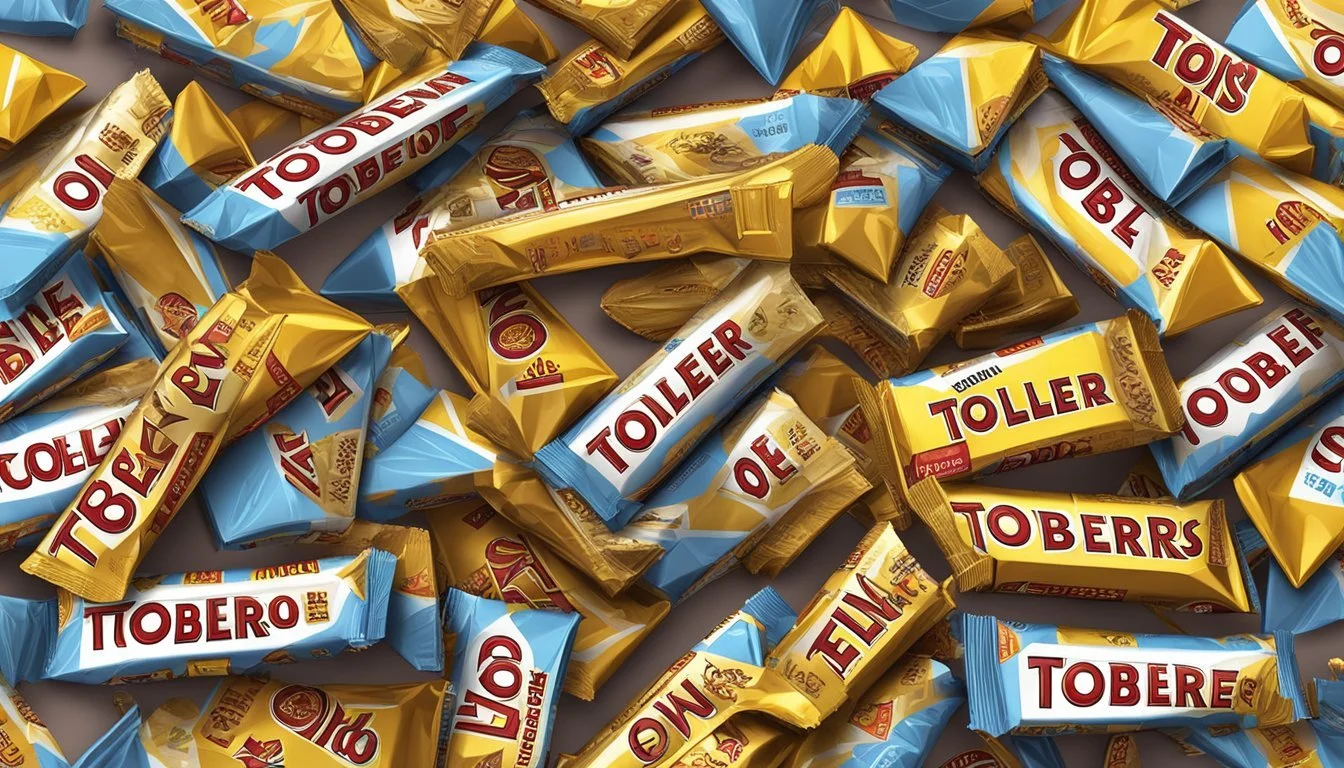How Much Toblerone Chocolate Per Day Is Too Much?
Understanding Daily Limits
When considering the consumption of Toblerone, the distinctive Swiss chocolate (What wine goes well with chocolate?) known for its nougat, honey and almond ingredients, and eye-catching triangular packaging, moderation is key. While the allure of chocolate, with its pleasurable taste and mood-lifting properties, is strong, there's a fine line between enjoyment and excess. Dietary guidelines suggest that moderation in all things sweet is prudent. Specifically, the American Heart Association advises that women should limit added sugar intake to 25 grams per day and men to 36 grams per day. A single serving of Toblerone may already approach or exceed these limits.
It's not just about sugar, though—calories and fat are also important considerations when indulging in chocolate. The calorie content in confections like Toblerone can impact diet and fitness goals if not monitored. Heart health, obesity, and diabetes are health concerns that may be influenced by overconsumption of sugary and high-fat foods, including chocolate. Therefore, while chocolate can fit into a balanced diet, how much Toblerone one should consume daily becomes a matter of balance and health objectives.
A balance is possible by understanding the constituents of Toblerone and aligning consumption with dietary recommendations. Individuals aiming for a healthy lifestyle can enjoy Toblerone while being aware of their overall daily intake of treats. Consequently, they can still reap the potential benefits of chocolate's components, such as antioxidants found in cocoa, without falling into the trap of over-indulgence.
Chocolate Basics
When discussing daily consumption limits for Toblerone chocolate, it's important to understand the fundamental characteristics of chocolate, such as types, cocoa content, and ingredients.
Types of Chocolate
Dark Chocolate Dark chocolate is characterized by its high cocoa content and the absence or minimal presence of milk. Its primary ingredients are cocoa solids, cocoa butter, and sugar.
Milk Chocolate Milk chocolate includes milk powder or condensed milk in addition to cocoa solids and sugar, giving it a creamier texture and sweeter taste than dark chocolate.
White Chocolate Unlike dark and milk chocolate, white chocolate doesn't contain cocoa solids. It is made from cocoa butter, sugar, and milk, resulting in a light color and a profile rich in sweetness.
Cocoa Content
The percentage of cocoa content in chocolate greatly influences its flavor and nutritional profile.
Dark Chocolate: Typically contains 50-90% cocoa solids, cocoa butter, and sugar.
Milk Chocolate: Generally has about 10-50% cocoa solids, cocoa butter, and sugar, with more than 12% milk products.
White Chocolate: Contains at least 20% cocoa butter, 14% milk solids, and no more than 55% sugar.
Added Ingredients
Manufacturers often add other ingredients to chocolate to enhance its flavor, texture, or shelf life.
Sugar: Essential for sweetening, the quantity varies significantly between dark, milk, and white chocolate.
Milk: Can be added as powder, liquid, or condensed form. It's a key ingredient in milk chocolate and white chocolate, but not typically found in dark chocolate.
Additives: Toblerone chocolate, for instance, includes honey and almond nougat, which contribute to its distinct taste and texture.
Health Aspects
In considering the health aspects of Toblerone chocolate consumption, one should examine its nutritional components, the presence of beneficial compounds such as antioxidants and flavanols, and weigh the effects of sugar and fats.
Nutritional Value
Toblerone chocolate contains calories which contribute to energy intake and several minerals beneficial to health. For instance, it includes magnesium, vital for muscle and nerve function, iron which is crucial for transporting oxygen in the blood, calcium important for bones and zinc which supports the immune system. However, moderate consumption is key, as excess calorie intake can lead to weight gain.
Nutrient Importance Magnesium Muscle and nerve function Iron Oxygen transport Zinc Immune support Calcium Bone health
Antioxidants and Flavanols
The cocoa in Toblerone contains flavanols and antioxidants like polyphenols. These compounds can neutralize free radicals, potentially reducing inflammation and lowering the risk of diseases. Flavanols specifically can improve blood flow and blood pressure, benefitting heart health.
Polyphenols: Combat free radicals
Flavanols: Support cardiovascular health
The Effects of Sugar
While Toblerone provides beneficial nutrients, it also contains added sugars, which can raise the risk of health issues such as diabetes, obesity, and high cholesterol when consumed in large quantities. Excessive sugar can increase bad cholesterol and inflammation, adversely affecting blood vessels.
Excess sugar: Leads to obesity, diabetes, heart disease
Fats and Heart Health
Toblerone chocolate includes fats, some of which are saturated fats that should be eaten in moderation due to their association with high cholesterol and cardiovascular disease risk. Balance needs to be struck, as some fat is necessary in diets, but too much, particularly saturated fat, can compromise heart health.
Saturated fats: Can contribute to high cholesterol, heart disease
Moderation is crucial for maintaining heart health
Daily Consumption
When it comes to enjoying Toblerone chocolate, understanding recommended serving sizes and potential overeating risks ensures that individuals can savor this sweet treat in a healthy way.
Recommended Amounts
Moderation is key when consuming Toblerone, which is a confection rich in both sugar and calories. A standard serving size of Toblerone is typically one triangle, which is approximately 32 grams. Considering the overall daily sugar intake, it's advisable for adults to limit their consumption to just a couple of triangles to avoid excessive sugar and calorie intake.
Sugar Content: Important to keep under control due to impacts on blood sugar and insulin.
Caffeine: Present in small amounts, offering a mild energy boost.
Fiber: Minimal in Toblerone, so should not be relied upon for dietary fiber needs.
Overeating Risks
Overindulging in Toblerone can lead to several health implications such as weight gain, and in the longer term, increased risks for conditions like diabetes and heart disease due to high levels of added sugars.
Calories: Excessive caloric intake from sweets can contribute to obesity.
Blood Sugar: Spikes in blood sugar from overeating chocolate can stress the body's insulin response.
The chocolate's appealing taste can make it tempting to consume in large quantities, but awareness of these risks is crucial for maintaining well-being.
Moderation and Balance
An individual can typically enjoy Toblerone chocolate bars as part of a balanced diet by eating them in moderation. It's best to view Toblerone as an occasional treat rather than a staple food to mitigate health risks while still enjoying its unique flavor.
Sweet Treat: To be enjoyed mindfully, with attention to portion sizes.
Health Benefits: Limited when it comes to sweets, yet small amounts can be part of a joyous lifestyle without detriment.
Psychological and Cognitive Effects
Eating Toblerone, like other chocolate types, impacts brain function due to compounds such as theobromine and phenylethylamine. These substances have the potential to influence mood and cognitive function, particularly during stress and aging. However, moderation is crucial as excessive consumption can lead to negative effects, including insulin resistance, which is linked to type 2 diabetes.
Mood and Stress
Chocolate contains phenylethylamine and theobromine, which may improve mood and reduce stress. Phenylethylamine, in particular, stimulates the brain to release endorphins, leading to a sense of well-being. Theobromine, a mild stimulant often compared to caffeine, can also contribute to increased alertness and well-being. It's important to balance these potential benefits with the chocolate's sugar content, which could affect insulin resistance and mood regulation over time.
Theobromine: Mild stimulant that can enhance mood and reduce stress.
Phenylethylamine: Stimulates endorphin release, contributing to well-being.
Cognitive Function and Aging
Regular consumption of chocolate, specifically constituents like flavanols in dark chocolate, can be associated with improved cognitive performance, including attention, processing speed, and memory. This may be partly attributable to enhanced blood flow to the brain, facilitated by nitric oxide production. Flavanols are thought to have protective effects on brain health, potentially slowing cognitive decline associated with aging. Nonetheless, the key is moderation, as too much sugar and fat can negate the health benefits of chocolate, and contribute to age-related insulin resistance.
Cognitive Performance: Chocolate flavanols may improve memory, attention, and processing speed.
Aging: Potential protective effects on the brain, mitigating age-related cognitive decline.
Miscellaneous Benefits and Considerations
In determining the optimal consumption of Toblerone chocolate, one must consider not only the health benefits but also the potential drawbacks. The ingredients, such as almonds and the chocolate's flavanol content, play significant roles in its health impact.
Health Enhancing Add-Ons
Toblerone chocolate is notable for its unique inclusion of almonds, which are a source of healthy fats, fiber, and protein, potentially enhancing the chocolate's health benefits. Almonds, along with other nuts found in select varieties of chocolate, contribute to heart health and have anti-inflammatory properties. Furthermore, the chocolate's flavanol content can offer antioxidant benefits, which help in reducing cell damage.
Fruits: Some Toblerone variants contain fruit pieces that add natural sweetness and additional nutrients to the chocolate.
Potential Negative Effects
While enjoying Toblerone, consumers should be aware of possible negative effects. Its sugar content can be a concern for those with sugar sensitivities, potentially disrupting sleep and leading to restlessness. Additionally, chocolate may cause heartburn in some individuals due to an increase in stomach acid, and eating too much could contribute to systematic health issues.
Heartburn: Overconsumption can increase the risk especially for those who are prone to issues with stomach acid.
Restlessness and Sleep: High sugar and caffeine content might affect sleep patterns.
Label Reading and Chocolate Selection
Label reading is crucial when selecting a Toblerone or any chocolate bar. Consumers should look for products with:
High cocoa content: Indicates higher flavanol levels
Organic ingredients: Minimizes exposure to harmful pesticides and additives
Type of nuts and fruit used: Impacts nutrient composition and potential allergens
Consideration Why It Matters Organic Certification Less chemical processing and ethically sourced Inclusion of Nuts and Fruits Adds nutritional value and beneficial components to the chocolate Flavanol Content Higher flavanol content contributes to antioxidant benefits
Meta-analyses and systematic reviews have shown that moderation is key when consuming chocolate to reap health benefits while avoiding the adverse effects.







